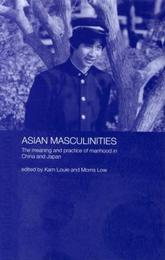
|
Asian Masculinities: The Meaning and Practice of Manhood in China and Japan
Hardback
Main Details
| Title |
Asian Masculinities: The Meaning and Practice of Manhood in China and Japan
|
| Authors and Contributors |
Edited by Kam Louie
|
|
Edited by Morris Low
|
| Physical Properties |
| Format:Hardback | | Pages:272 | | Dimensions(mm): Height 234,Width 159 |
|
| ISBN/Barcode |
9780415298384
|
| Classifications | Dewey:305.310951 |
|---|
| Audience | | Professional & Vocational | | Tertiary Education (US: College) | |
|---|
| Illustrations |
bibliography, index
|
|
Publishing Details |
| Publisher |
Taylor & Francis Ltd
|
| Imprint |
RoutledgeCurzon
|
| Publication Date |
12 June 2003 |
| Publication Country |
United Kingdom
|
Description
In recent years western men have vociferously attempted to reorient themselves as sensitive and new age in a plethora of academic and popular works about men and masculinity. Far less has been heard about Asian men and masculinities. By providing a multi-disciplinary discussion of Chinese and Japanese masculinities, this book shows how East Asian masculinities are being formed and transformed as Asia is increasingly globalized. The gender roles performed by Chinese and Japanese men are examined not just as they are lived in Asia, but also in the West. The masculinities that emerge show how these men change as the world changes around them, highlighting similar and differing practices men from these two major Asian cultures are adopting as they attempt to optimize their positions. This book enhances current understandings of East Asian identities and cultures as well as Western conceptions of gender and sexuality. Insights and methodologies from many backgrounds inform the book and topics discussed are equally varied. While basic issues such as masculine ideals in China and Japan are examined, the book also addresses issues including homosexuality, women's perceptions of men, the role of sport and food and Asian men in the Chinese diaspora. Dr Tomoko Aoyama, University of Queensland, Australia; Romit Dasgupta, University of Western Australia; Dr Ray Hibbins, Griffith University, Australia; Dr Tseen Khoo, University of Queensland
|